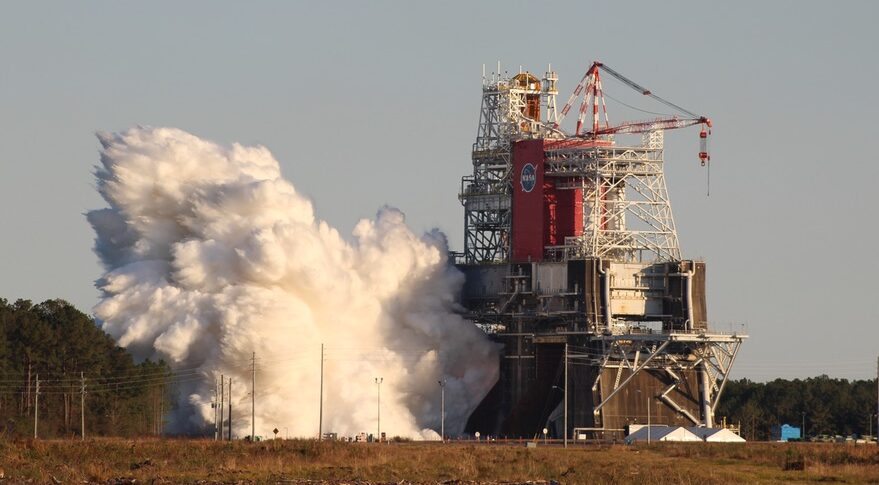Green Run hotfire test ends early
Green Run hotfire test ends early

Updated 11:30 p.m. Eastern after post-test briefing.
BAY ST. LOUIS, Miss. — NASA performed a hotfire test of the core stage of the Space Launch System Jan. 16, but the stage’s four main engines shut down a little more than a minute into a test designed to last eight minutes.
The core stage ignited its four RS-25 engines at 5:27 p.m. Eastern at the B-2 test stand at NASA’s Stennis Space Center here for what was to be a full-duration static-fire test scheduled to last 485 seconds. The test was the last milestone in the Green Run test campaign for the SLS core stage that started a year ago.
However, the engines shut down a little more than one minute into the test. In a feed from the control room broadcast on NASA TV, controllers reported an “MCF,” or main component failure, on one of the four engines, about 45 seconds after ignition. The engines shut down about 20 seconds later.
The cause of the early shutdown was not immediately clear. At a briefing two and a half hours after the test, NASA officials offered little additional information about the cause of the shutdown. “When I left the team a little while ago, they were still beginning to pour through the data, and we will continue to do that over the next several days,” said John Honeycutt, SLS program manager at NASA’s Marshall Space Flight Center.
That included, he said, what triggered the MCF. “I don’t know much more about that than you do at this point in time. Any parameter that went awry on the engine could send that failure ID, but at the time that they made the call we did still have four good engines up and running at 109%.”
There was also what Honeycutt described as a “little bit of a flash” about 60 seconds into the test around a thermal protection blanket on engine number four, the same engine where the MCF was reported. He didn’t have additional information about what might have caused that problem.
At a Jan. 12 briefing, officials with NASA and Boeing, the SLS prime contractor, said they needed the static fire test to go at least 250 seconds to collect the data they needed.
“If we had an early shutdown for whatever reason, we get all of the engineering data that we need to have high confidence in the vehicle at about 250 seconds,” said John Shannon, vice president and SLS program manager at Boeing, at that briefing. That included throttling the engines from 109% of rated thrust down to 95% and then back to 109% to simulate passing through Max Q, or maximum dynamic pressure, during flight, as well as gimbaling the engines.
While that would indicate NASA would need to perform another hotfire test, agency leadership suggested they could go ahead and ship the stage to the Kennedy Space Center to be prepared for the Artemis 1 launch. “It depends what the anomaly was and how challenging it’s going to be to fix it,” NASA Administrator Jim Bridenstine said. “I think it very well could be that it’s something that’s easily fixable and we can feel confident going down to the Cape and staying on schedule.”
That schedule called for launching Artemis 1 by the end of the year. “I think it’s still too early to tell,” Bridenstine said when asked if a launch this year was still feasible given the truncated hotfire test. “We just don’t know yet.”
NASA didn’t give a schedule for deciding whether another hotfire test was needed and, if so, when it could take place. “We have to look at the data to see what happened during the test and make that assessment before we can determine how long it would take,” Honeycutt said. At a minimum, he estimated it would take 21 to 30 days to prepare the engines for another test firing if nothing had to be replaced or repaired.
Comments
Post a Comment